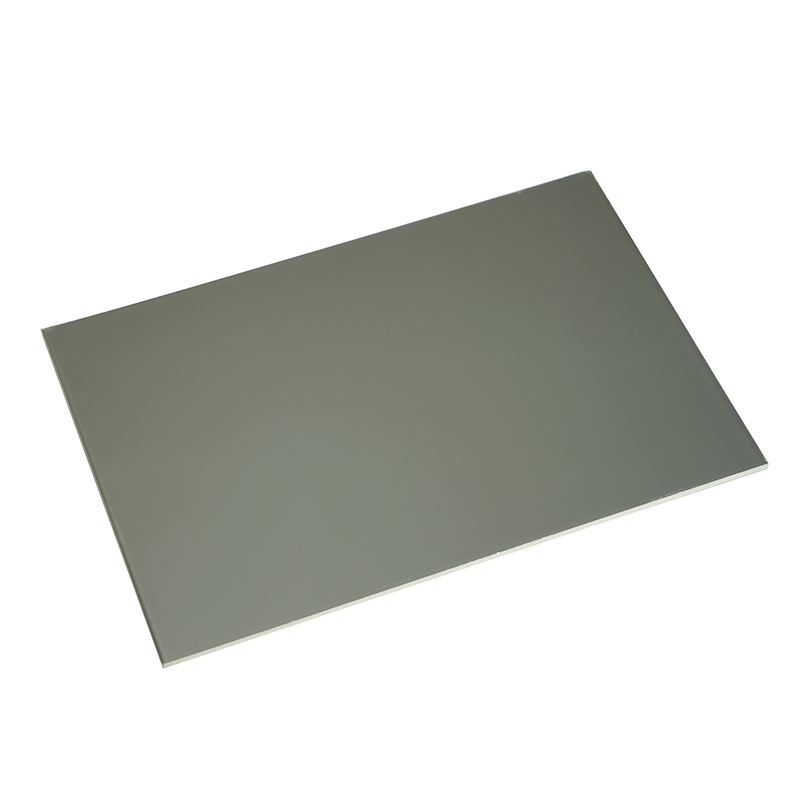Stainless steel composite panels, also known as stainless steel sandwich panels or stainless steel composite material sheets, are a high-performance material that is increasingly popular in architecture, transportation, and industrial manufacturing. By combining the excellent properties of stainless steel with the lightweight advantages of composite materials, these panels overcome the high cost and heavy weight of traditional solid stainless steel sheets, making them an ideal choice for many applications. This article will delve into the main properties of stainless steel composite panels, revealing why they have become a preferred material in modern engineering.
One of the most notable properties of stainless steel composite panels is their outstanding corrosion resistance. The surface is typically made from stainless steel grades such as 304 or 316, which contain alloying elements like chromium and nickel. These elements form a dense, passive film on the surface, effectively resisting corrosion from the atmosphere, water, acids, and alkalis. This makes stainless steel composite panels perform exceptionally well in harsh environments like marine settings, chemical plants, and food processing facilities, significantly extending the material's service life.
The core advantage of stainless steel composite panels lies in their perfect blend of lightness and strength. Compared to solid stainless steel sheets of the same thickness, composite panels can be more than 50% lighter. This is due to their unique "sandwich" structure: two thin stainless steel face sheets bonded to a lightweight polymer core (such as polyethylene, polypropylene, or an aluminum honeycomb core). This structure not only significantly reduces overall weight but also leverages mechanical principles to greatly increase the material's rigidity and flexural strength. This lightweight yet high-strength characteristic allows for reduced load, simplified installation, and lower transportation costs when manufacturing large structural components, building facades, and vehicle interiors.

Fire resistance is a key reason why stainless steel composite sheets are favored in the construction industry. Depending on the core material, the panels can achieve various fire ratings. For instance, fire-resistant grades using inorganic cores (like mineral wool or glass wool) can achieve fire resistance ratings of several hours, effectively preventing the spread of fire and providing valuable time for evacuation and property protection. Additionally, the stainless steel face sheets are non-combustible, further enhancing overall fire safety.
Stainless steel face sheets can undergo various surface treatments, such as brushing, mirror polishing, sandblasting, or coloring, offering a wide range of visual effects and decorative options. This makes metal sandwich panels not only a structural material but also an ideal decorative one, commonly used for building exteriors, interior finishes, and elevator doors. Furthermore, stainless steel composite panels have excellent workability, allowing for easy cutting, bending, and riveting, which can accommodate complex designs and shapes.
In an era where sustainability is increasingly important, the environmental properties of stainless steel composite panels are also a key consideration. Stainless steel itself is a fully recyclable material with a high scrap value, and it can be recycled infinitely without loss of performance. Some core materials, like the aluminum honeycomb core, also have a high recycling rate. This ensures that the panels align with environmental principles throughout their lifecycle, helping to reduce resource consumption and environmental pollution.
In summary, stainless steel composite panels, as a modern stainless steel cladding material, have found widespread application across multiple industries due to their exceptional corrosion resistance, lightweight high strength, excellent fire resistance, versatile decorative finishes, and positive environmental attributes. As technology continues to advance, their properties and applications are expected to expand further, offering more possibilities for future engineering design and manufacturing.